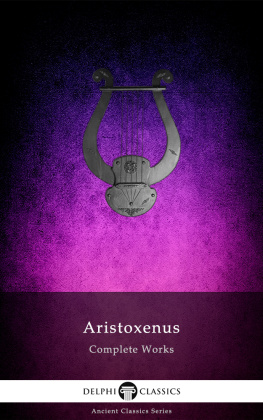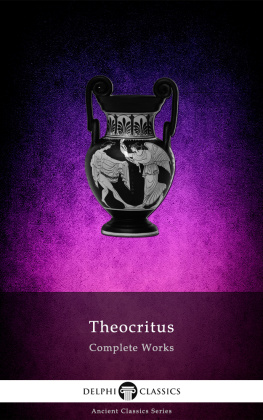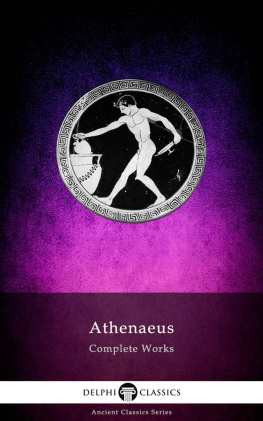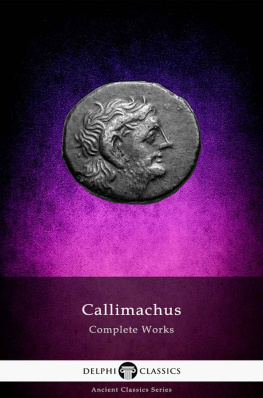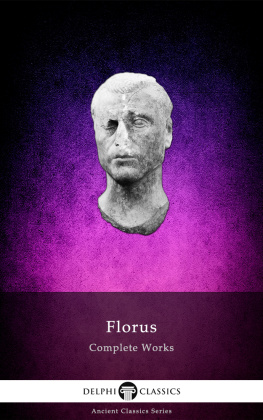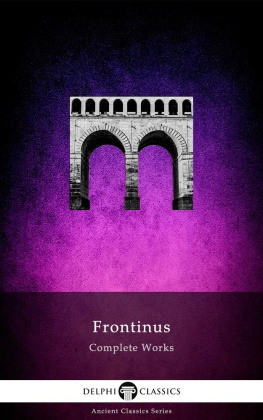The Complete Works of
DIONYSIUS OF HALICARNASSUS
(c. 60 BC c. 7 BC)

Contents

Delphi Classics 2017
Version 1

The Complete Works of
DIONYSIUS OF HALICARNASSUS
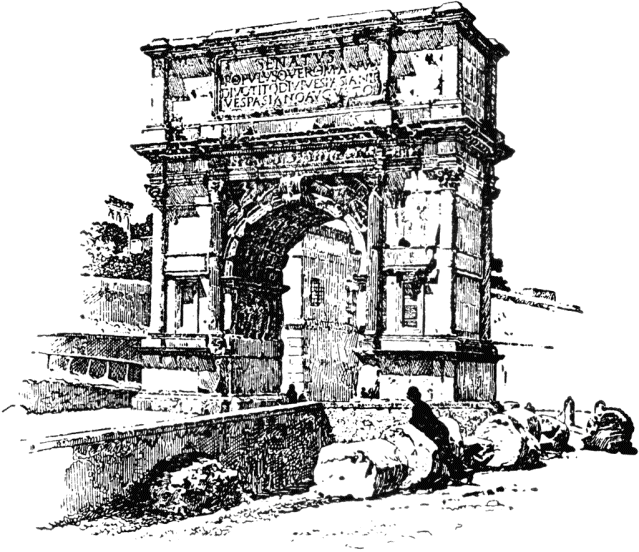
By Delphi Classics, 2017
COPYRIGHT
Complete Works of Dionysius of Halicarnassus
First published in the United Kingdom in 2017 by Delphi Classics.
Delphi Classics, 2017.
All rights reserved. No part of this publication may be reproduced, stored in a retrieval system, or transmitted, in any form or by any means, without the prior permission in writing of the publisher, nor be otherwise circulated in any form other than that in which it is published.
ISBN: 978 1 78656 388 0
Delphi Classics
is an imprint of
Delphi Publishing Ltd
Hastings, East Sussex
United Kingdom
Contact: sales@delphiclassics.com
www.delphiclassics.com
The Translations

Halicarnassus, modern-day Bodrum, Turkey Dionysius birthplace

The ruins of the Mausoleum of Maussollos at Halicarnassus one of the Seven Wonders of the Ancient World
ROMAN ANTIQUITIES

Translated by Earnest Cary
Dionysius of Halicarnassus was a Greek historian and teacher of rhetoric, who flourished during the reign of Caesar Augustus. He taught in Rome while studying the Latin language, collecting material for his history of Rome. His literary style was Atticistic imitating the classical Greek of Herodotus. His major work, Roman Antiquities , embraced the history of Rome from the mythical period to the beginning of the First Punic War. Divided into twenty books, of which the first nine remain entire, while the tenth and eleventh are nearly complete, the remaining books exist in fragments in the excerpts of the Roman Emperor Constantine Porphyrogenitus and an epitome discovered by Angelo Mai in a Milan manuscript. The first three books of Appian, Plutarchs Life of Camillus and Life of Coriolanus are believed to be largely indebted to Dionysius.
Of particular note is Dionysius version of the Romulus and Remus myth, concerning the legendary founding of Rome. He relates an alternate, non-fantastical version of the twins birth, survival and youth. Numitor manages to switch the twins at birth with two other infants. The twins are delivered by their grandfather to Faustulus to be fostered by him and his wife. Faustulus is descended from the first Greek colonists in Latium. He is the caretaker for Amulius holdings around Palatine hill. He is then persuaded to care for the twins by his brother Faustinus, who tends to the kings herds on nearby Aventine Hill. Their adopted mother is Faustulus wife Laurentia, a former prostitute. According to Plutarch, lupa (Latin for wolf) was a common term for members of her profession and this gave rise to the she-wolf legend. The twins receive a proper education in the city of Gabii.
Dionysius chief object was to reconcile the Greeks to the rule of Rome, expanding upon the good qualities of their conquerors, suggesting with the support of ancient sources that the Romans were genuine descendants of the older Greeks. According to Dionysius, history is philosophy teaching by examples though some commentators have been quick to question his bias as a Greek rhetorician. Nevertheless, he carefully consults the best authorities and his work and that of Livy are the only connected and detailed extant accounts of early Roman history.

La Lupa Capitolina the Capitoline Wolf an ancient depiction of the Romulus and Remus myth recounted in Book I

Milazzo, Messina, Sicily the site of the Battle of Mylae, which took place in 260 BC during the First Punic War. Dionysius history of Rome concluded with an analysis of the causes and events of Romes war with Carthage. The Battle of Mylae was the first full-scale naval battle between Carthage and the Roman Republic.
CONTENTS

A medieval depiction of Dionysius
BOOK I
[1.1] Although it is much against my will to indulge in the explanatory statements usually given in the prefaces to histories, yet I am obliged to prefix to this work some remarks concerning myself. In doing this it is neither my intention to dwell too long on my own praise, which I know would be distasteful to the reader, nor have I the purpose of censuring other historians, as Anaximenes and Theopompus did in the prefaces to their histories but I shall only show the reasons that induced me to undertake this work and give an accounting of the sources from which I gained the knowledge of the things that I am going to relate. [2] For I am convinced that all who propose to leave such monuments of their minds to posterity as time shall not involve in one common ruin with their bodies, and particularly those who write histories, in which we have the right to assume that Truth, the source of both prudence and wisdom, is enshrined, ought, first of all, to make choice of noble and lofty subjects and such as will be of great utility to their readers, and then, with great care and pains, to provide themselves with the proper equipment for the treatment of their subject. [3] For those who base historical works upon deeds inglorious or evil or unworthy of serious study, either because they crave to come to the knowledge of men and to get a name of some sort or other, or because they desire to display the wealth of their rhetoric, are neither admired by posterity for their fame nor praised for their eloquence; rather, they leave this opinion in the minds of all who take up their histories, that they themselves admired lives which were of a piece with the writings they published, since it is a just and a general opinion that a mans words are the images of his mind. [4] Those, on the other hand, who, while making choice of the best subjects, are careless and indolent in compiling their narratives out of such reports as chance to come to their ears gain no praise by reason of that choice; for we do not deem it fitting that the histories of renowned cities and of men who have held supreme power should be written in an offhand or negligent manner. As I believe these considerations to be necessary and of the first importance to historians and as I have taken great care to observe them both, I have felt unwilling either to omit mention of them or to give it any other place than in the preface to my work.
Next page

